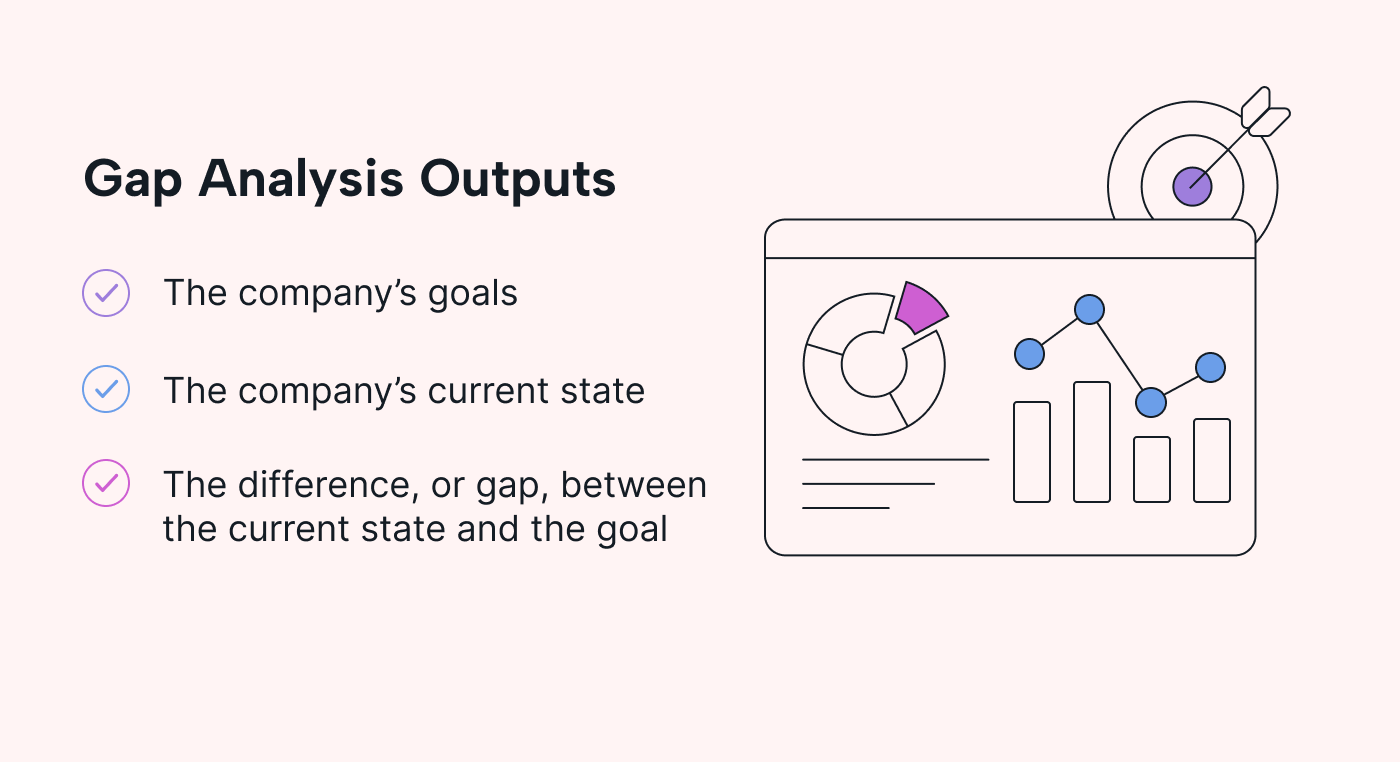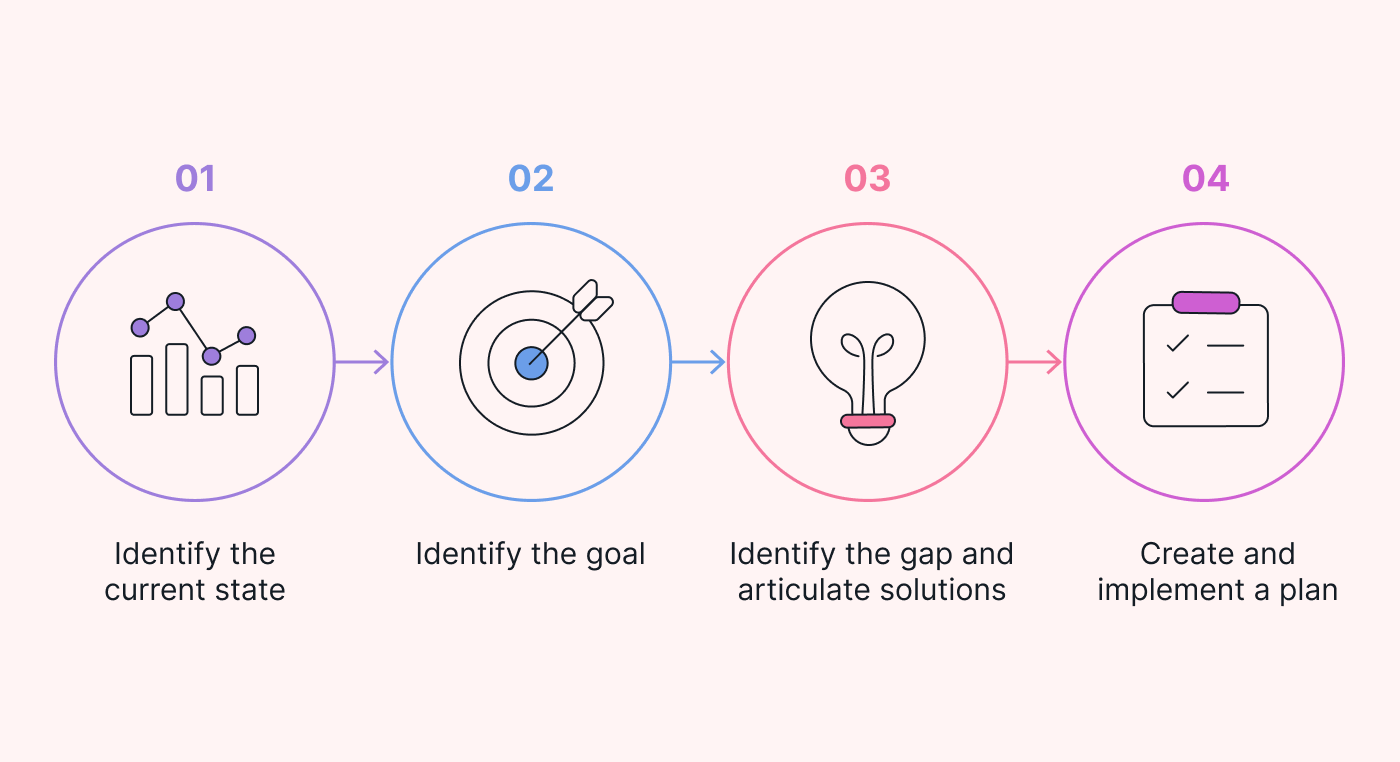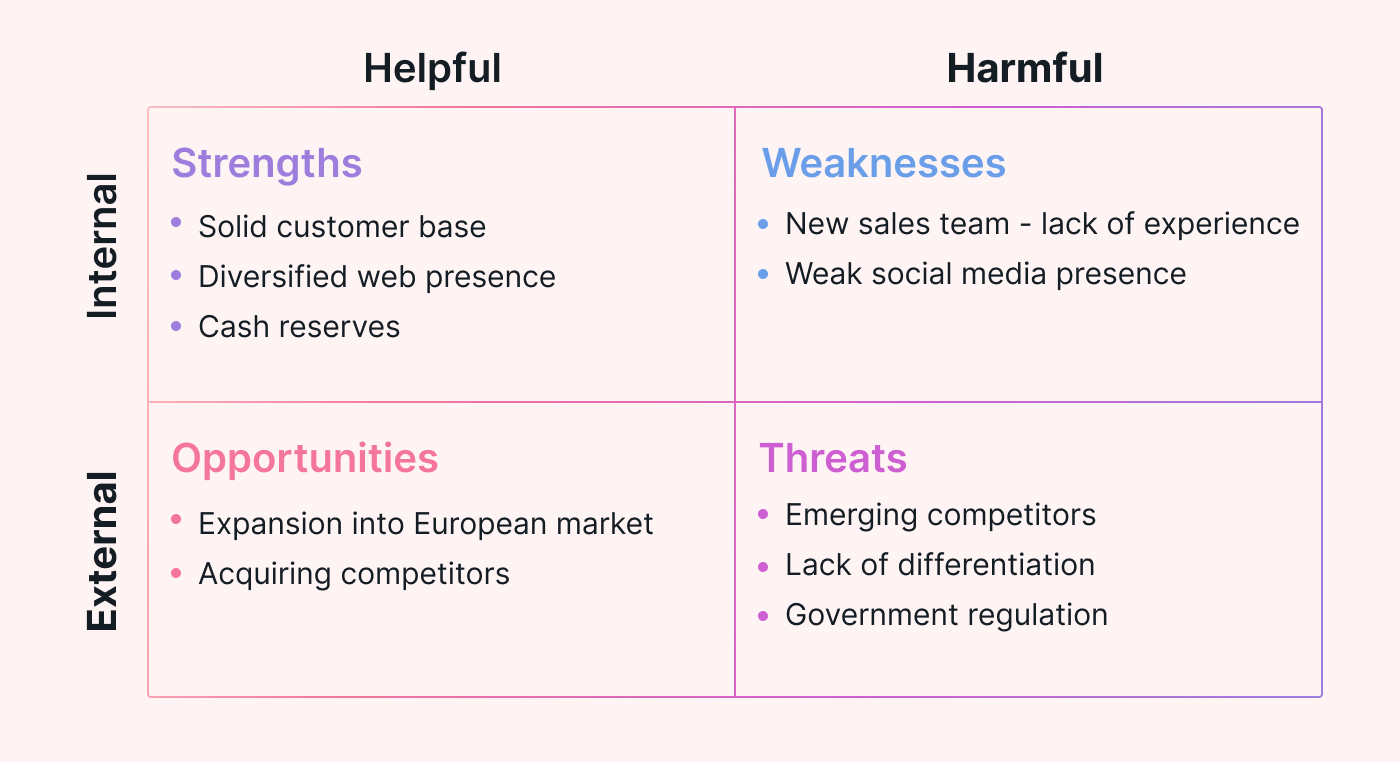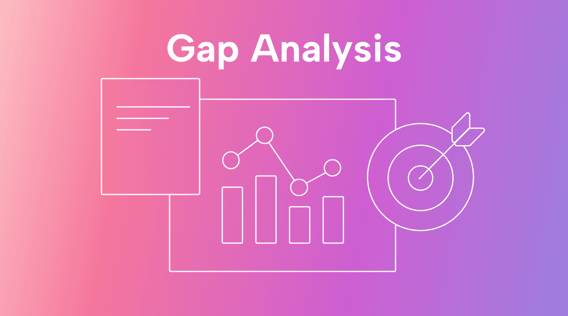It’s not unusual to fall short of goals. In fact, nearly half of projects fail to meet primary objectives. However, failing to meet business goals doesn’t have to be a disaster. With gap analysis, it’s possible to find the problems, address them, then go on to greater success.
Unlike many personal goals, business goals aren’t just aspirational. They’re concrete objectives that are based on hard data. When your team’s performance falls short, there’s a specific reason. If you can identify the problem, you can fix it, improve the performance of your human resources, and bring operational excellence to your business.
However, finding that reason requires understanding the difference between expectations and current performance. That’s what’s called gap analysis. It’s a straightforward process in many ways, but all the terminology around this technique can confuse it. And as this can be a vital tool for improving a business’s performance, let us help you cut through the jargon.
In this article, we’ll discover why the gap analysis process is so important. Learn more about the different types, and discuss tools you can use to do a gap analysis (and implement your improvements). We’ll also describe the basics of performing your own gap analysis and discuss when and why it’s appropriate.
Understanding the concept
What is a gap analysis?
In simple terms, it’s an efficiency tracker that helps you to find ways to improve on what you aren’t doing well. It allows you to look for why your business isn’t achieving the goals you’ve set, and it does that by mapping where you are against where you want to be. It considers internal and external factors to help you determine why there’s a problem.
A gap analysis identifies:
 |
- Your company’s goals
- Your company’s current state
- And the difference, or gap, between the two.
Once you have identified the gap, you can create an action plan to close that gap.
Why might you need a gap analysis?
There can be many situations in which you might need to do a gap analysis:
- When your business is underperforming.
- When a specific business unit isn’t living up to expectations.
- When a project or new initiative has failed fully or partially.
- When you feel the performance of an employee is substandard.
The way to eat an elephant is one bite at a time, so in the first case, it’d be better to undertake a gap analysis on every single department or area of the business. Once you have all the data in, you could prioritize closing those gaps with the greatest impact or the most significant effect on morale.
Your approach should be more targeted when a specific business unit falls short. If your sales team isn't hitting its targets, you should probably dive deeper. Is it the quality of leads? The ability to close? The time it takes between steps? Or all of these things?
If your customer satisfaction is down due to complaints about long wait times when calling for service, it could be as simple as the team taking too long to deal with each call. That, in turn, could be due to the systems they're using or the people's skill sets. For both, a gap analysis would identify the reasons.
The same logic applies to projects. If your new initiative didn’t deliver the benefits that you were expecting, you need to dig deeper. And if one of your team members is underperforming, it’d help you understand why.
When would you conduct a gap analysis?
Timing is everything. Conducting a gap analysis process is usually something to do when you know that you have a problem but you’re not sure what’s the cause, as in the examples above. But it could also be something you do as:
- An initial step in a strategic planning exercise.
- Part of a post-mortem analysis of a project that went wrong.
One important thing to avoid is confirmation bias. If you know the problem and have pre-conceived ideas on the cause, get someone else to do the (unbiased) gap analysis.
Benefits of a gap analysis
The primary benefit of gap analysis is straightforward. It is an organized way to identify your problems and equip you to craft solutions. But the process also offers you a lot of other essential benefits. You can:
- Quantify current state: A gap analysis should produce measurements of performance, which you can use in many ways in your business.
- Identify weaknesses: Understanding your current status may highlight weaknesses you didn’t know about, even if they didn’t cause performance shortfalls you noticed.
- Identify opportunities: Weaknesses are often opportunities for improvement, and a market gap analysis may uncover surprising strengths you can leverage to exploit the opportunities.
- Establishes benchmarks: Understanding expected performance against actual performance means you can establish standards. You can use those standards to gauge performance as time goes on.
Different types of gap analyses
It’s possible to fall short of objectives in many ways. In crafting your corrective action, you need to understand these gaps because the specifics of how your objectives weren’t met can often point you to the solutions.
- Expectation gap: This most basic gap is the difference between expectation and reality. It may be an internal expectation of the business’s performance or an external one. For example, the public’s view on the business’s performance.
- Performance gap: Also known as strategy gaps, these are areas in which team members or departments aren’t meeting your or your customer’s expectations of them.
- Product gap: An area where you don’t have a product to serve a need.
- Legitimacy gap: A gap between public perception of what a business should be doing and what the enterprise is seen to be doing.
- Profit gap: A difference between your anticipated profits and the actual profits.
- Change gap: When the number of new users or customers doesn’t match your forecast.
- Team power gap: Difference between the employee hours available and the time required to do the job.
 |
How to do a gap analysis
Your business or organization may already have guidelines for performing a gap analysis (which may be a combination of different types of gap analysis). This can vary depending on your business type and the gap you're trying to identify.
You may also need to be more specific about the process by doing a profit gap analysis, a need gap analysis, a performance gap analysis, or even a strategic gap analysis. But, in broad strokes, there are four simple steps to conduct a gap analysis.
Identify the current state
Before identifying the current state, you need to understand what you’re trying to measure. Are you looking at an employee? A team? A department? Or your entire organization?
Once you've done that, you can begin collecting data with surveys and by tracking performance indicators. This will help you to understand where you are now. But you must be clear on what you're trying to measure. If your metrics are too loose, you risk scope creep and losing the focus of your analysis.
To be sure, not all of this information is numerical or quantitative. Certainly, the measurements are, but there’s also qualitative information to collect, like the details of your team’s current processes and methodologies. And the more information you gather, the sharper the picture you can build of your current state.
Identify goals
The very fact that you feel the need for a gap analysis suggests that you already know where the goals are falling short. But you need to understand your goals in the same terms as your current state to find the difference.
To do that, you must interrogate them like you did to find your current state, quantitatively and qualitatively. In this data collection process, it should be clear when you meet a goal or when there's a gap between your current state and your desired future state.
Identify the gap and articulate solutions
The analysis is a simple arithmetic exercise: subtracting the current state numbers from the future state numbers to find the difference.
The 'why' part is a bit more complicated because it's qualitative data.
If we go back to the customer service example from earlier, our SMART goals might have been for no client call to wait for more than two minutes (for an agent to answer the call) and for dropped calls to be no more than 2% of total daily calls. But the current state may reveal a five-minute wait and that 8% of calls are dropped.
We could also look at total calls daily (on average and by day of the week), number of agents, average time to solve (by agent), and other related metrics. That’s our quantitative analysis.
Understanding the why is where we get to the qualitative assessment. We must look at that data for patterns and assess the processes. Do we need more agents? More training? More efficient processes? Can we shorten wait time with voice menu-based filtering? And so on.
The goal here is to understand where you are falling short and why. Specifics are important, and it may be necessary to drill down through several layers of answers before you uncover the real causes.
Create a plan and implement it
With all the hard data and analysis in hand, it should be quite easy to find the right solution to the gap that you have identified. All that's left for you to do is create a plan of action to fill that gap. You know the why, so you now have to figure out a way to close it.
You can use all the information you gathered in identifying the gap as guidelines for your plan, but you must also consider the costs of your solutions. It may be necessary first to pick the low-hanging fruit — the low-cost, easy wins — and tackle the more complex changes later.
But most important of all: give yourself a time frame to implement solutions. The changes might go overlooked (or ignored) if you don't set deadlines. And at some point after that deadline date, further analysis will be required to understand how (and if) things have changed.
Gap analysis tools and techniques
You can think of the concepts below as ‘tools’ or types of gap analysis. They’re frameworks helpful in approaching a gap analysis in an organized way.
SWOT analysis
Standing for “strengths, weaknesses, opportunities, and threats,” SWOT analysis is a simple technique usually represented in a matrix identifying internal and external factors on one side and helpful and harmful factors on the other.
 |
Nadler-Tushman model
Or you may prefer a more detailed congruence model with four areas to uncover performance issues. These are work, people, organization, and culture. The trick is to pair the factors to highlight different aspects of performance.
McKinsey 7-S framework
This model focuses on seven factors that impact an organization’s performance, all starting with the letter S. Problems in any of the seven will hurt performance. These include strategy, structure, systems, skills, style, staff, and shared values.
PERT technique
PERT stands for performance evaluation and review technique. This framework estimates the time for task completion. It uses tools like dependency charts and surveys of employees to generate a series of estimates, including best-case, average-case, and worst-case performance.
Conducting your own gap analysis
No matter the type of gap analysis, timing is the most important factor in a gap analysis. Time is money, so you must do it before the opportunity evaporates. And once you've completed your gap analysis, you need to take corrective action within as short a time as possible to minimize the damage from the gap.
Motion can help you schedule and implement the improvement identified by your gap analysis and help you meet your goals. Its intelligent calendar will manage your time, keep you on task, and help you stay focused on the critical work at hand.





